 FOCUS, Morris: Lowcountry Rapid Transit project makes whole lot of sense
FOCUS, Morris: Lowcountry Rapid Transit project makes whole lot of sense
COMMENTARY, Brack: No halfway needed on tax reform
IN THE SPOTLIGHT: Charleston Gaillard Center
MY TURN, Felkel: Bush had a life well-lived
GOOD NEWS: Rotary holiday party raises thousands for charity
FEEDBACK: Do you have any opinions? Send them to us
MYSTERY PHOTO: Clues in photo might give away where it is
S.C. ENCYCLOPEDIA: Blacksmith Philip Simmons
CALENDAR: From a book launch to more holiday events
FOCUSFOCUS, Morris: Lowcountry Rapid Transit project makes whole lot of sense
By Kyra Morris, contributing editor | Community anticipation has been growing in recent months for the Lowcountry Rapid Transit (LCRT) project, which would serve as the spine of a premium mass transportation system in the Charleston region.
As proposed, LCRT would connect Summerville, North Charleston and downtown Charleston, running largely in dedicated, separated lanes, while providing relief from traffic congestion.
The LCRT is often referred to as “light rail on wheels.” LCRT would perform more like a train service than a bus route with many of the same conveniences, such as level boarding and wide doors on both sides of vehicles, modern transit stations, pre-payment, free Wi-Fi and more.
The LCRT project is proposed to operate primarily down the center median of Rivers Avenue, with limited stops at key locations. The large vehicles, holding up to 85 passengers, would have automated priority at intersections, allowing for LCRT to stay on schedule.
In short, it would be unlike anything the Charleston region as ever seen.
More than transit
Lowcountry Rapid Transit is a complex and forward-thinking system. The concept is backed by thoroughly studied methodologies relating to community building and development. Data shows that citizens who live in thoughtfully created, relatively dense, mixed-use, walkable environments enjoy longer and healthier lives.
But how do we get from a transit system concept to creating sustainable, prosperous healthy communities? I spoke with Steve Dudash, chairman of the Berkeley-Charleston-Dorchester Council of Governments’ (BCDCOG) Mass Transit Advocacy Committee (MTAC). Dudash has been a proponent of premium mass transit for more than a decade, having researched similar systems – and their correlated community development process – throughout the world.
“Bus rapid transit, and the transit-oriented development that it inspires, is based on real science, and it can help us re-think the sprawl verses density debate in a much more productive way,” Dudash said.
In 2012, the BCDCOG commissioned a large-scale study, the I-26alt Alternatives Analysis, with the intention of identifying a fixed-guideway transit solution for congestion along Interstate 26. The I-26alt study stemmed from an earlier commuter rail feasibility study completed in 2007 and updated in 2011. While multiple options were examined – including light rail and commuter rail – bus rapid transit was selected as the preferred alternative. Many factors played a role, including community input, flexibility and price. A similar light rail option, for instance, was projected to cost around seven times as much as LCRT.
Last year, BCDCOG formed the MTAC to advocate in the business community for regional mass transit.
“We need to put the thinking, process and infrastructure in place that will allow us to create not just a short term fix, but a multi-generational solution,” Dudash said. “And we’ll need the whole tri-county ‘village’ to get involved to help raise this child.”
Purpose and opportunity
LCRT’s first goal would be to reduce traffic congestion along I-26 and provide safe, reliable, and efficient transportation to places of employment, hospitals and retail hubs.
“Imagine getting on a sleek, modern, low-emission vehicle, plugging into the internet and relaxing on the way to your destination,” Dudash said, “versus navigating and fighting inevitable traffic.”
Dudash, added that opportunity for everyone in the community is a key theme for LCRT.
“For residents along the corridor, it’s unprecedented connectivity to jobs, healthcare, food and education,” he said. “For motorists, it means fewer cars on the road. For commuters it means being able to avoid gridlock, and for the region it’s an opportunity for unrivaled connectivity.”
Costs and funding
In 2016, Charleston County voters passed a half-cent sales tax referendum that, in part, provided essential funding for LCRT to apply for matching federal grants. Estimated construction costs are currently $360 million, with annual operating costs of about $5.9 million. BCDCOG is serving as the project sponsor and has an ongoing commitment to participate in obtaining federal grants from agencies such as the Federal Transit Administration, which is lead oversight agency for LCRT.
Proposed route and stations
Station locations are proposed, and BCDCOG will be going through a community-driven study process to finalize them. Eighteen stations are currently proposed, from Summerville to Line Street in Charleston, and the station areas have been strategically identified to serve activity centers such as Trident Health, Charleston Southern University, the North Charleston Transit Center, Charleston’s upper peninsula and more. A final connection to the medical district downtown will also be vital.
Travelers using the system would pre-purchase tickets, eliminating time-consuming exchanges when boarding. The stations will be designed as secure, permanent structures with weather protection.
Timeline and next steps
The LCRT project engineering consultant has been hired and advanced planning and engineering is underway. The National Environmental Protection Act (NEPA), a federally mandated 2-year environmental review, will begin in 2019, with public involvement opportunities beginning in January. The successful completion of NEPA is a requirement to access federal funds. Construction would begin in 2023 with the inaugural ride projected for 2025.
Numerous premium transit corridors have already been identified by BCDCOG in its recently completed Regional Transit Framework Plan. These arteries will serve as the “skeleton” to LCRT’s spine.
“As these plans advance, what we’ll see are jobs, green spaces, wise land use and fewer single-passenger automobile trips,” Dudash said. “It will take our village to raise this transit child, and the entire community is going to be better off for it.”
Kyra H. Morris, a Certified Financial Planner, is CEO of Morris Financial Concepts, Inc., in Mount Pleasant. A national leader in the financial planning profession, she has been named several times by leading magazines as one of the country’s top financial planners.
- Have a comment? Send to: editor@charlestoncurrents.com
BRACK: No halfway needed on tax reform
By Andy Brack, editor and publisher | The newly-found political buzzphrase among the South Carolina legislative class is “tax reform.”
 Suddenly, after years of hemming and hawing about doing something about the hodge-podge of laws that make up the state’s tax code, there’s a little juice to do something real to stabilize the tax structure and, we hope, make it a little bit fairer up and down the line.
Suddenly, after years of hemming and hawing about doing something about the hodge-podge of laws that make up the state’s tax code, there’s a little juice to do something real to stabilize the tax structure and, we hope, make it a little bit fairer up and down the line.
There’s a glimmer of hope for the hard work of changing and updating the tax structure thanks to a new 129-page report commissioned by the S.C. Chamber Foundation and done by the Tax Foundation, a national research group. This new Roadmap to Tax Reform describes the complications and sheer bulkiness of how the state of South Carolina levies taxes. For example:
On the state income tax: It “features the highest top marginal rate in the Southeast, and the highest effective rates in the region for many wage earners.”
On sales taxes: They are “imposed on an extremely narrow base that exempts many goods and most services, a holdover from an earlier era.”
On property taxes: “Act 388 remade the property tax landscape in South Carolina – and not in an entirely positive way. The exceedingly light taxation of some classes of property has resulted in heavy, uncompetitive burdens on others.”
On user fees and more: “A robust, and often byzantine, system of fees in lieu of taxes has emerged to offset an otherwise deeply uncompetitive property tax system for many businesses. Meanwhile, local governments choose among a bevy of tourism- and accommodation-related taxes, each with their own structures.”
 In other words, the way the state of South Carolina taxes is a big hot mess. It got that way because lawmakers of the past tried to patch, repatch and cover over a structure that was weak and needed to be modernized. Why didn’t they just fix it with something better? Because that’s hard work. Comprehensive tax reform has a lot of moving pieces and for it to be done right, there’s got to be a lot of balance and compromise, two values that aren’t found much these days in the political arena.
In other words, the way the state of South Carolina taxes is a big hot mess. It got that way because lawmakers of the past tried to patch, repatch and cover over a structure that was weak and needed to be modernized. Why didn’t they just fix it with something better? Because that’s hard work. Comprehensive tax reform has a lot of moving pieces and for it to be done right, there’s got to be a lot of balance and compromise, two values that aren’t found much these days in the political arena.
The Tax Foundation report suggests the impetus to reform the tax code is to make South Carolina more competitive with other states because the current system makes us lag in more ways than one: “Underlying our analysis is the goal of enhancing South Carolina’s competitive standing and a commitment to the principles of sound tax policy – that, to the greatest extent possible, taxes should be simple, transparent, neutral and stable, and that the best tax structures are those with broad bases and low rates.”
We’ve been pushing those basic economic principles for a dozen years since the 2006 publication of Doing Better: Progressive Tax Reform for the American South by the Center for a Better South.
So here’s the practical problem in South Carolina: Can tax reform be done in a way that can be fair but also generate enough revenue to deal with decades of underfunding that caused some of the worst public schools in the country, public colleges with high tuition, crumbling roads, unsafe bridges, health problems that are among the nation’s worst, and on and on?
Tax reform, if it is real, can’t just mean a rejiggering of the state’s tax structure to make it revenue-neutral. An updated tax structure needs to fuel more investment so we can get out of the hole in education, roads and health care. In turn, that will make us more competitive over the long term. Having high quality education, roads and health care is why people will move here. Merely rearranging the tax chairs on the deck of the Titanic without investing more to make us greater will do little to push South Carolina forward.
We applaud the Chamber and Tax Foundation for their hard work to engage legislators in what will be tough discussions and hard decisions. But if we want real and comprehensive tax reform to make the Palmetto State truly competitive, a new tax structure must be simple and fair to all – but also generate more money to make up for what was not done right for decades.
- Have a comment? Send to: editor@charlestoncurrents.com
SPOTLIGHT: Charleston Gaillard Center
 Charleston Gaillard Center provides the Lowcountry with a world-class performance hall, elegant venue space and vibrant educational opportunities that inspire dynamic community throughout the area through the power of the performing arts. The Center’s vision is to enrich the diverse community of Charleston with artistic and cultural experiences that are accessible and unique, and to serve as an educational resource for generations to come.
Charleston Gaillard Center provides the Lowcountry with a world-class performance hall, elegant venue space and vibrant educational opportunities that inspire dynamic community throughout the area through the power of the performing arts. The Center’s vision is to enrich the diverse community of Charleston with artistic and cultural experiences that are accessible and unique, and to serve as an educational resource for generations to come.
Did you know that the Charleston Gaillard Center is a 501c3 non-profit that works with over 25,000 students each year from the tri-county area? Promoting education is one of the core values of the Charleston Gaillard Center and an integral part of our mission. By broadening the reach of arts-education in the Lowcountry the Gaillard Center encourages learning through the arts and serves as a powerful tool for student achievement and personal development while providing people of all ages with the opportunity to cultivate and grow their talents and appreciation for the arts. To learn more about our education initiative, click here: www.gaillardcenter.org/outreach.
For more information, click the links below:
- Buy ticketsand see our great events
- Become a membertoday
- Plan your eventat the Charleston Gaillard Center
- Learn aboutour education and community programs h
- Contact the Gaillard Center.
- To meet all of our underwriters, click here.
MY TURN, Felkel: Bush had a life well-lived
“I take as my guide the hope of a saint: In crucial things, unity; in important things, diversity; in all things, generosity. America today is a proud, free nation, decent and civil, a place we cannot help but love.”
– President George H.W. Bush.
By Chip Felkel, special to Charleston Currents | One of my heroes is gone and hopefully not the ambition, desire and commitment to see our country through this lens.
A text early last Saturday from an old friend (a loyal Democrat who understands it’s not about partisanship, it is about people) informed me that President George H.W. Bush had died. It was no real shock or surprise. He was, after all, 94, and just like my own parents who shared a long loving marriage, he was likely to soon follow his beloved Barb.
And yet, I found myself truly heartbroken. Yes, for me and certainly for his family. But I was much more heartbroken for the entire country. Our 41st president epitomized “public service.” He provided us all with such a fantastic example of what it means to be a true leader. He was an incredible inspiration as a father, husband and grandfather as evidenced by the love and affection of his family. But he also showed grit and determination to serve and to succeed in the oil business in Texas, as head of the CIA, the Republican National Committee, as ambassador to China and the United Nations, as vice president and of course, as the president of the United States.
This week, through the passing of this true American leader and statesman, we have been blessed to be reminded of how our public discourse and politics should, could, and still can be. But only if we demand it.
The outpouring of tributes provided many younger citizens with a history lesson and all of us with an example of a life well-lived. George Herbert Walker Bush was about duty, honor, commitment and loyalty, while also staying humble and occasionally self-deprecating, even when lesser men would have allowed their egos to lead, rather than their heads.
His unquestionable and steadfast commitment to his country and to “doing the right thing”, allowed him to see the greater good in others and their intentions, to work with political foes to achieve big things, to build important coalitions around the world and to make hard decisions that he accepted would undoubtedly affect him directly. He was far from perfect. He made mistakes. But his intentions were never questioned.
When I joined his campaign in 1987, I could never have known just how much he would impact my life professionally and personally. At 22, I was tasked with initially establishing the statewide organization here in South Carolina for “George Bush for President” after serving on Carroll Campbell’s successful race for governor. Later, I served as executive director of Bush-Quayle Georgia for 1988 general election. It was the first state called for “41” on election night and is one of my proudest moments.
I am not objective here. I admit it. But I believe we have suffered a tremendous loss, one that many may not fully appreciate or understand. I sincerely hope and pray that all citizens will listen to these stories, reread the beautiful eulogies that were delivered and know not only that he was a truly great man, but that he was the kind of man we really want and need to be our leader. In short, I want us all to acknowledge just how fortunate we were to have this man serve as POTUS.
Character. Faithfulness. Loyalty. Service. That was 41. I have many fond memories. I burst with immense pride to have played a small role in his incredible, impactful, important life. And, I believe we all should strive to follow his example: Live life to the fullest, do the right thing, be loyal and serve others with honor. God bless you, Mr. President and the Bush family. God blessed us with your presence.
Chip Felkel, founder of The Felkel Group in Greenville, operates the RAP Index to help organizations uncover key relationships.
- Have a comment? Send to: editor@charlestoncurrents.com
n]GOOD NEWS[/button]
GOOD NEWS: Rotary holiday party raises thousands for charity
Staff reports | Hundreds of merry-makers braved chilly, wet weather Saturday to celebrate the season and raise some money for charity.
The Rotary Club of Charleston’s annual Holiday Parade of Boats Viewing Party went off without a hitch – except that the actual boat parade didn’t happen for the first time because of inclement weather. That didn’t matter about 400 people who gathered at the Charleston Maritime Center to eat barbecue, quaff beverages, listen to good music and enjoy a visit from Santa. The annual event, now in its fifth year, raised thousands of dollars for the club’s charity fund, which offers grants to local organizations throughout the year for special projects.
The annual event included the raffle of a $40,000 boat, which went to Melissa Capps, a human resources executive from Isle of Palms. The raffle and party are the club’s major fund-raiser for the year. If you missed out on the party or raffle, but still want to make a holiday donation that will benefit area charities, click here.
In other Good News:
![]() MARINA MEETING: The Charleston County Park and Recreation Commission (will hold a drop-in style public information and input meeting for the conceptual master planning of its Cooper River Marina property. The meeting will run from 6 p.m. to 8 p.m. Dec. 13 in the cafeteria at Military Magnet Academy in North Charleston. The purpose of this meeting is to determine community interest in recreational opportunities at the Cooper River site, taking advantage of the visual connection to water. To learn more about the plans for the 25-acre park site, click here.
MARINA MEETING: The Charleston County Park and Recreation Commission (will hold a drop-in style public information and input meeting for the conceptual master planning of its Cooper River Marina property. The meeting will run from 6 p.m. to 8 p.m. Dec. 13 in the cafeteria at Military Magnet Academy in North Charleston. The purpose of this meeting is to determine community interest in recreational opportunities at the Cooper River site, taking advantage of the visual connection to water. To learn more about the plans for the 25-acre park site, click here.
ONE OF THIRTY: The U.S. Botanic Garden in Washington, D.C., has selected Magnolia Plantation and Gardens as one of only 30 gardens to install temporary exhibits at the nation’s capital in 2019 when the country celebrates public gardens. According to a press release, Magnolia’s unique design as the last large-scale Romantic-style garden in the country fits with the Botanic Garden’s mission to create an array of displays that represent a diversity of gardens, said Botanic Garden spokesman Devin Dotson. The Botanic Garden is adjacent to the U.S. Capitol Building. The garden displays will be exhibited outside the Botanic Garden from May to October.
NEW LIBRARY: Construction of the new Bees Ferry West Ashley Library is underway. Charleston County Public Library and Charleston County government officials kicked off the construction of the new facility during a groundbreaking ceremony on Dec. 4. The 20,000-square foot facility will be located off of Glenn McConnell Parkway near West Ashley High School. The new library will include a children’s area and storytime room, meeting rooms, an auditorium, a makerspace for do-it-yourself) projects, a learning lab for computer instruction and more. See the design. Three other new libraries are underway in the county. A fifth in North Charleston, is in the design phase.
FREE PARKING: The city of Charleston and Charleston County government are offering two hours of free holiday parking at various downtown garages through Jan. 1, 2019. You can either print the voucher or download a mobile version. PRINT | MOBILE. The voucher is valid at the following garages: Visitor Center Garage, 34 St. Philip, Concord-Cumberland, E. Bay-Prioleau, Aquarium, Midtown, Majestic Square and Queen Street.
PRE-FILED LEGISLATION: State senators will pre-file 2018 bills on Dec. 12 and we’ll have a summary of the most important pieces of legislation as we roll out the 2019 version of our Tally Sheet. Six days later, House members will pre-file bills.
- Click here on Dec. 12 to see pre-filed Senate bills.
- Click here on Dec. 18 to see pre-filed House bills.
We haven’t heard from you lately; Send us your thoughts
We’d love to get your impact in one or more ways:
Send us a letter: We love hearing from readers. Comments are limited to 250 words or less. Please include your name and contact information. Send your letters to: editor@charlestoncurrents.com. | Read our feedback policy.
Tell us what you love about the Lowcountry. Send a short comment – 100 words to 150 words – that describes something you really enjoy about the Lowcountry. It can be big or small. It can be a place, a thing or something you see. It might the bakery where you get a morning croissant or a business or government entity doing a good job. We’ll highlight your entry in a coming issue of Charleston Currents. We look forward to hearing from you.
MYSTERYMYSTERY: Clues in photo might give away where it is
What are where is this photo? Send your guess to: editor@charlestoncurrents.com. And don’t forget to include your name and the town in which you live.
Our previous Mystery Photo
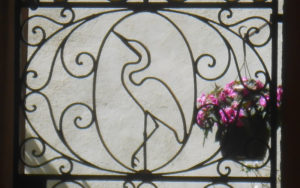 Our Dec. 3 mystery, “Tell us more about this artwork” was pretty easy, some people told us. That’s fine – sometimes they need to be on the easier side just to encourage entries!
Our Dec. 3 mystery, “Tell us more about this artwork” was pretty easy, some people told us. That’s fine – sometimes they need to be on the easier side just to encourage entries!
Congratulations to those who identified the metal egret figure as part of blacksmith Philip Simmons’ Egret Gate on St. Michael’s Alley in Charleston: Chris Brooks of Mount Pleasant, James McMahan of Charleston; Marnie Huger of Richmond, Va.; Ross Lenhart of Pawleys island; David Brown of Daniel Island; and George Graf of Palmyra, Va.
Graf added some context: “Simmons was an American artisan and blacksmith specializing in the craft of ironwork. Simmons spent 78 years as a blacksmith, focusing on decorative iron work. When he began his career, blacksmiths in Charleston made practical, everyday household objects, such as horseshoes. By the time he retired 77 years later, the craft was considered an art form rather than a practical profession.
Examples of Simmons’ work, including iron gates, can be seen throughout the city of Charleston, South Carolina, as well as the rest of South Carolina Lowcountry. His pieces are displayed at the Smithsonian Museum, South Carolina State Museum, and even Paris, France, and China.” For more on Simmons and his life, check out his entry in the S.C. Encyclopedia (below).
- Send us a mystery: If you have a photo that you believe will stump readers, send it along (but make sure to tell us what it is because it may stump us too!) Send it along to editor@charlestoncurrents.com.
HISTORY: Blacksmith Philip Simmons
S.C. Encyclopedia | Born on June 9, 1912, on Daniel Island in a Gullah-speaking community just a few miles from Charleston, legendary blacksmith Philip Simmons moved to the port city in 1925. He soon apprenticed himself to an elderly African American wheelwright named Peter Simmons (no relation), a man who was born in slavery on a plantation near St. Stephen and whose father and grandfather had also worked as blacksmiths.
Under Peter’s watchful eye Philip would initiate an illustrious career. From Peter the thirteen-year-old apprentice was exposed to so many branches of ironworking that Philip Simmons would later describe himself as a “general blacksmith” since he could shoe horses, repair wagons, fashion iron fittings for boats, make and mend tools, and fabricate structural iron for buildings. When motorized trucks began to replace the horses and wagons that were mainstays of his business, he began to try his hand at making decorative wrought-iron gates and balconies. He quickly found that he could do that sort of work since he “could mash out a leaf the same as a horseshoe.” Shifting from the pragmatic to the artistic branch of blacksmithing, Philip Simmons would establish himself 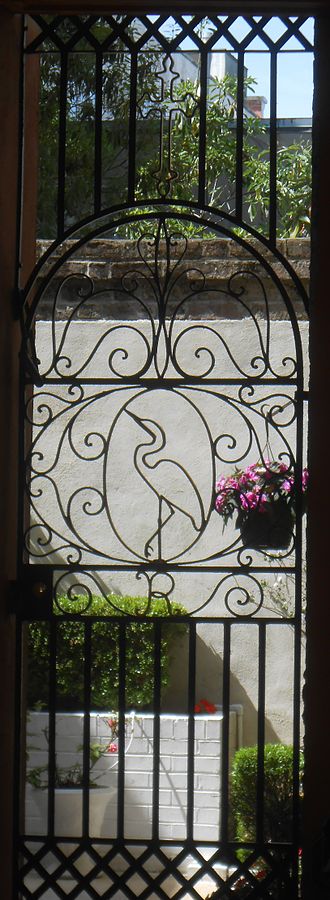 as an artistic force in Charleston.
as an artistic force in Charleston.
Simmons’s most elaborate ironworks were created for homes in the celebrated Battery District near the harbor. Between 1938 and 1990 he produced more than two hundred commissions, which included gates, fences, railings, and balconies. Among the most visible of his works are the gates made for the Christopher Gadsden House on East Bay Street, which feature a pair of threatening rattlesnakes that commemorate Gadsden’s “Don’t Tread on Me” flag designed during the Revolutionary War.
Coming to the notice of the Smithsonian Institution in 1976, Simmons was invited to demonstrate his skills at the Festival of American Folklife held on the Mall in Washington, D.C. There, at the foot of the Lincoln Memorial, he crafted a gate filled with a variety of images intended to show the range of his abilities. This work came to be known as the “Star and Fish” gate and was acquired by the National Museum of American History in 1982. This was the same year that the National Endowment for the Arts began to recognize and honor American folk artists with the title of National Heritage Fellow. As a member of the initial class of Fellows, Simmons was widely lauded, and he began to receive commissions from various museums.
The work that will probably stand as his masterpiece is a gate created in 1987 for the South Carolina State Museum in Columbia. It features two large egrets surrounded by numerous scrolls and is topped with an image of a palmetto tree. While Simmons was fashioning this gate he often referred to it as “the gate for the state,” but after it was installed, the museum chose to honor its creator by naming it “The Philip Simmons Gate” and placing it at the entrance to the history galleries.
While he turned his shop over to his former apprentices, Simmons continued to design decorative pieces and receive accolades into the twenty-first century. In addition to his induction into the South Carolina Hall of Fame and a lifetime achievement award from the state for his efforts in historic preservation, he has had a public garden, two parks, and the blacksmithing studio in the School for the Building Arts named for him. Simmons died on June 22, 2009.
- Click here to learn about the Philip Simmons Foundation.
— Excerpted from an entry by John Michael Vlach. This entry hasn’t been updated since 2006. To read more about this or 2,000 other entries about South Carolina, check out The South Carolina Encyclopedia, published in 2006 by USC Press. (Information used by permission.)
ON THE CALENDARCALENDAR: From a book launch to more holiday events
![]() Beach read: 6 p.m. to 7 p.m., Dec. 11, Charleston Library Society. The Society and Coastal Conservation League will celebrate the launch of Virginia and Dana Beach’s new book, A Wholly Admirable Thing: Defending Nature and Community on the South Carolina Coast. Open to the public, but RSVP encouraged. More info.
Beach read: 6 p.m. to 7 p.m., Dec. 11, Charleston Library Society. The Society and Coastal Conservation League will celebrate the launch of Virginia and Dana Beach’s new book, A Wholly Admirable Thing: Defending Nature and Community on the South Carolina Coast. Open to the public, but RSVP encouraged. More info.
Gaillard holiday events. Several holiday events are headed to the Charleston Gaillard Center, including the Christmas Collective LIVE on Dec. 14, School of the Arts Symphony and Singers on Dec. 17, Vienna Boys Choir on Dec. 21 and Charleston Symphony Holiday Pops on Dec. 22. Learn more here.
Holiday Movie Night: 4:30 p.m. to 7:30 p.m., Dec. 14, Hampton Park, 30 Mary Murray Drive, Charleston. A holiday movie chosen by community members will begin at 5:30 p.m. Free popcorn and holiday activities. More.
A Christmas Carol: Performances through Dec. 18, Dock Street Theatre, Charleston. Audiences say the holiday performance is the best way to start the Christmas season. Presented by Charleston Stage, the holiday favorite returns with the company’s imaginative take on the Dickens classic. Tickets are $29 to $70.
Charleston Christmas Special: Several shows through Dec. 23, Charleston Music Hall, 37 John St., Charleston. Producers Brad and Jennifer Moranz have worked all year to create a brand-new holiday show that’s nothing short of spectacular. Tickets are on sale now.
Holiday Festival of Lights. The Holiday Festival of Lights is in full swing at James Island County Park every evening through Jan. 1, 2019. This spectacular light show, now in its 29th year, is one of Charleston’s most beloved holiday events, featuring an estimated two million shimmering lights. The Holiday Festival of Lights is every evening at 5:30 p.m. nightly and closes at 10 p.m. Sunday through Thursday and 11 p.m. Friday and Saturday. More info: http://www.HolidayFestivalofLights.com
Guevara art show: Through Jan. 11, 2019 (Tuesdays through Saturdays), Redux Contemporary Art Center, 1056 King St., Charleston. Redux will present new work by fiber artist Camela Guevara in a show titled “Care Work.” Click to learn more.
Chaplin/Amble art show: Through Jan. 31, 2019, North Charleston City Gallery at the Charleston Area Convention Center, 5001 Coliseum Drive, North Charleston. Paintings by the current City of North Charleston Artist-in-Residence Quintin Chaplin, as well as photographs by local artist Richard Amble will be on exhibit
Early morning bird walks at Caw Caw: 8:30 a.m. every Wednesday and Saturday, Caw Caw Interpretive Center, Ravenel. You can learn about habitats and birds, butterflies and other organisms in this two-hour session. Registration not required, but participants are to be 15 and up. $10 per person or free to Gold Pass holders. More: http://www.CharlestonCountyParks.com.
AREA FARMERS MARKETS
SATURDAYS: The holiday Charleston Farmers Market, will be open Dec. 15 and 16.
SATURDAYS: Johns Island Farmers Market operates each Saturday from 9:30 a.m. to 1:30 p.m. year-round with more than 50 local farmers and vendors, food trucks, music and more. The market is located on the campus of Charleston Collegiate School, 2024 Academy Road, Johns Island.
- If you have an event to list on our calendar, please send it to feedback@charlestoncurrents.com for consideration. The calendar is updated weekly on Mondays.
If you like what you’ve been reading, how about considering a contribution so that we can continue to providing you with good news about Charleston and the Lowcountry. Interested? Just click the image below.
ABOUT CHARLESTON CURRENTSOUR UNDERWRITERS
Charleston Currents is an underwriter-supported weekly online journal of good news about the Charleston area and Lowcountry of South Carolina.
- Meet our underwriters
- To learn more about how your organization or business can benefit, click here to contact us. Or give us a holler on the phone at: 843.670.3996.
OUR TEAM
Charleston Currents offers insightful community comment and good news on events each week. It cuts through the information clutter to offer the best of what’s happening locally.
- Mailing address: P.O. Box. 22261 | Charleston, SC 29413
- Phone: 670.3996
Charleston Currents is provided to you weekly by:
- Editor and publisher: Andy Brack, 843.670.3996
- Contributing editor, common good, Fred Palm
- Contributing editor, money: Kyra Morris
- Contributing editor, Palmetto Poem: Marjory Wentworth
SUBSCRIBE FOR FREE
Subscriptions to Charleston Currents are free.
- Click here to subscribe.
- We don’t want to lose you as a reader of Charleston Currents, but if you must unsubscribe, you will have to do it through the email edition you receive. Just go to the bottom of any of your weekly newsletters and click the “unsubscribe” function. If that doesn’t work, please send us an email with the word “unsubscribe” in the subject line.
© 2008-2018, Statehouse Report, LLC. All rights reserved. Charleston Currents is published every Monday by Statehouse Report LLC, PO Box 22261, Charleston, SC 29413.





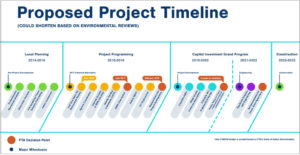
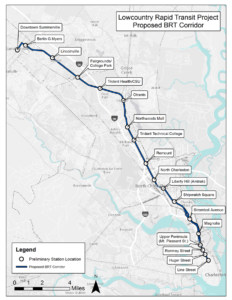

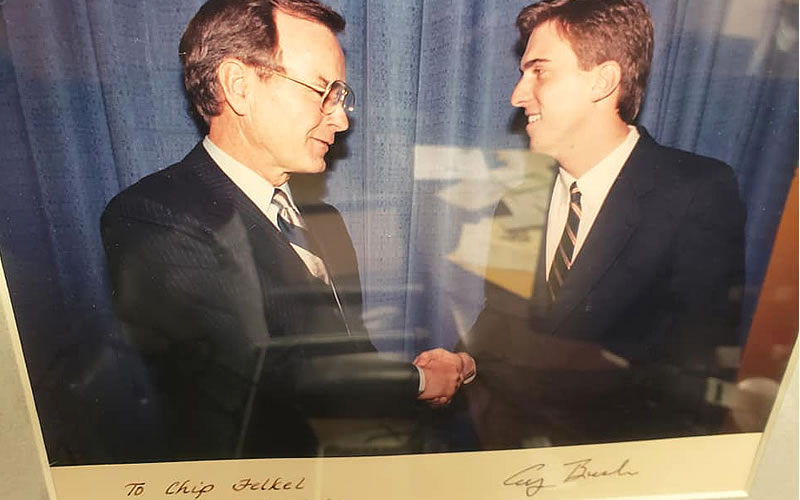

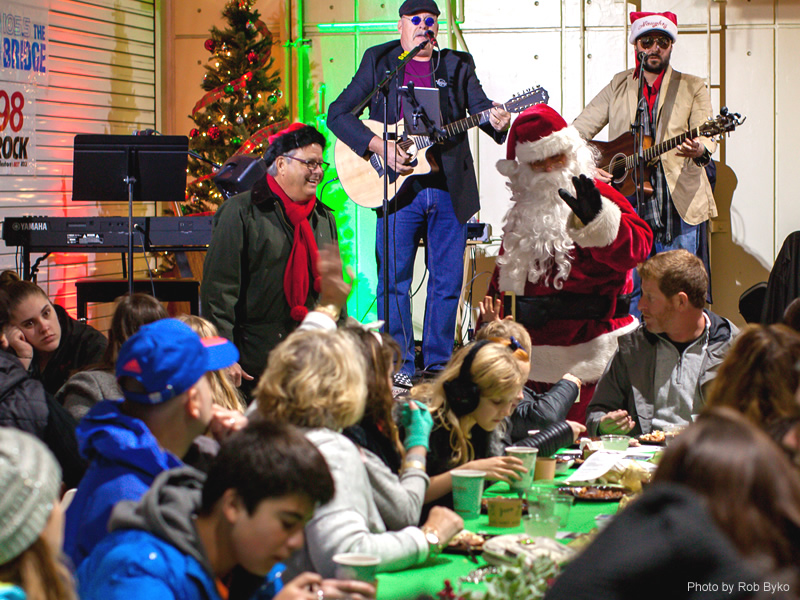
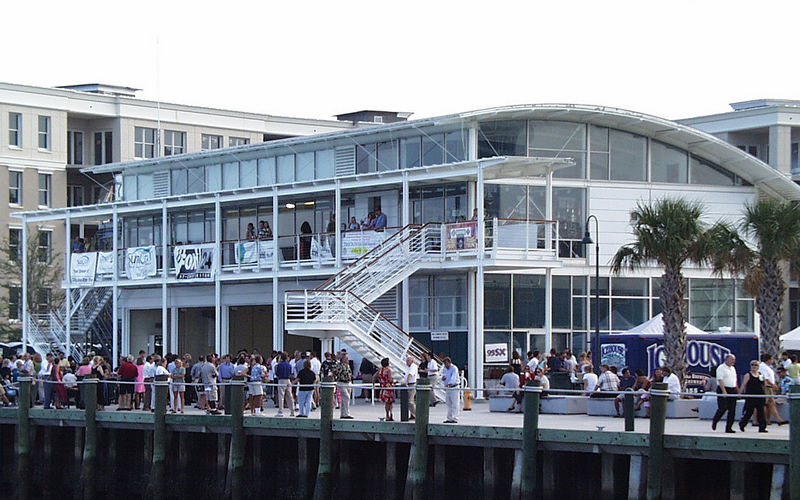
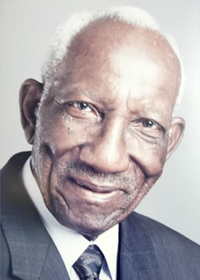

 We Can Do Better, South Carolina!
We Can Do Better, South Carolina!

























Pingback: Morris: Lowcountry Rapid Transit project makes whole lot of sense | One Region